

William Stopford
Every car discontinued in Australia in 2025
4 Hours Ago
A fresh face and tech tickle highlight a decent if largely surprise-free update for Hyundai’s evergreen i30 hatchback.
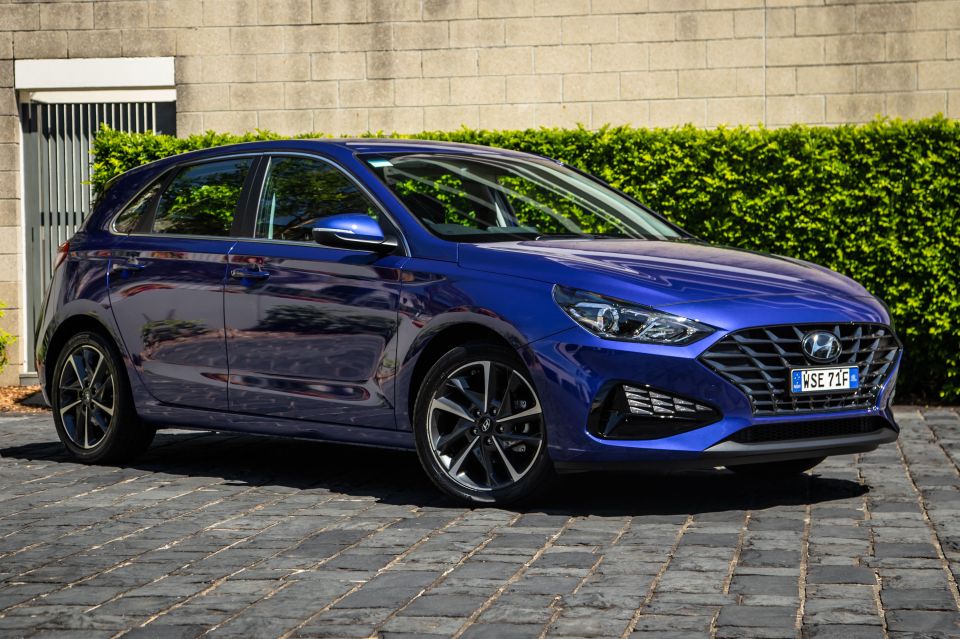


Journalist
New from
$29,790
excl. on-roads

Journalist
New from
$29,790
excl. on-roads


Journalist
New from
$29,790
excl. on-roads

Journalist
New from
$29,790
excl. on-roads
Quickly see how this car stacks up against its competition. Select any benchmark to see more details.
Where expert car reviews meet expert car buying – CarExpert gives you trusted advice, personalised service and real savings on your next new car.
The third and current generation of the Hyundai i30 small hatchback has more than pulled its weight as a model line in helping lift Hyundai’s regard with buyers in Australia since it arrived in mid-2017.
Not only did it have the critical measure of rivals like the Toyota Corolla and Mazda 3, Hyundai’s small five-door has garnered enough affection from enough newfound fans that the recently arrived MY21 facelift is being met by quite some derision – if our comments section is anything to go by (and it is).
I spare you the full rundown of range changes and the breadth of mixed reader feedback covered extensively in our pricing and spec story, short of saying the new look is an acquired taste, the $3000 rise in entry point isn’t unilaterally welcome (even if the extra safety kit brings its clear benefits) and, jeez, isn’t the old SR-cum-N Line mid-ranger a fondly regarded sweetie.
I, too, and a big fan of the outgoing N Line manual, to a degree that caused a stand-up argument with a scribe from a rival media outlet over that hatchback’s superbly and sweetly balanced virtues.
I also think my regard for the 1.6-turbo-powered old-school cog-swapper version is fair and reasonable disclosure given I’m tasked here with reviewing the arguably ‘nicer’ naturally aspirated upmarket Elite, which is different enough in more areas than the mere $800 price differential might otherwise suggest.
That new look? Eye, beholder, of course. That the ‘facelift’ Euro-produced N Line has escaped the Predator grille featured on Korean-made Active and Elite versions is, in some beholder eyes at least, not necessarily a bad thing. As documented prior, Europe gets a new headlight design integrating the DRLs while ours, well, doesn’t.
Further, as it’s a facelift, this refreshed version of the existing hatchback does not, for obvious reasons, feature the new platform underpinning the just released all-new i30 Sedan.

The Elite grade is an auto-only variant that lists for $30,220 plus on-road costs in automatic-only guise. It’s priced and positioned roughly in the broader eight-variant range (excluding the N hot hatch) that kicks off at $23,420 for the i30 manual and tops out with the N Line Premium auto at $36,220 list.
So it’s pricier than the pre-facelifted Elite, more affordable than the old and now-defunct ‘regular’ Premium flagship.
Similar money gets you into Mazda 3’s high-spec Touring ($29,590 list) or mid-grade Evolve with a larger 2.5-litre engine ($30,090 list), Toyota Corolla SX Hybrid ($30,795 list), Kia Cerato Sport+ ($29,340 list) and the turbocharged soon-to-be-replaced Mk7.5 Volkswagen Golf 110TSI Comfortline ($29,790 list) to name a few popular choices.
If you don’t like plain white there are five metallic, pearl or mica paint finishes available at a $495 upcharge, such as our tester’s fetching Intense Blue.
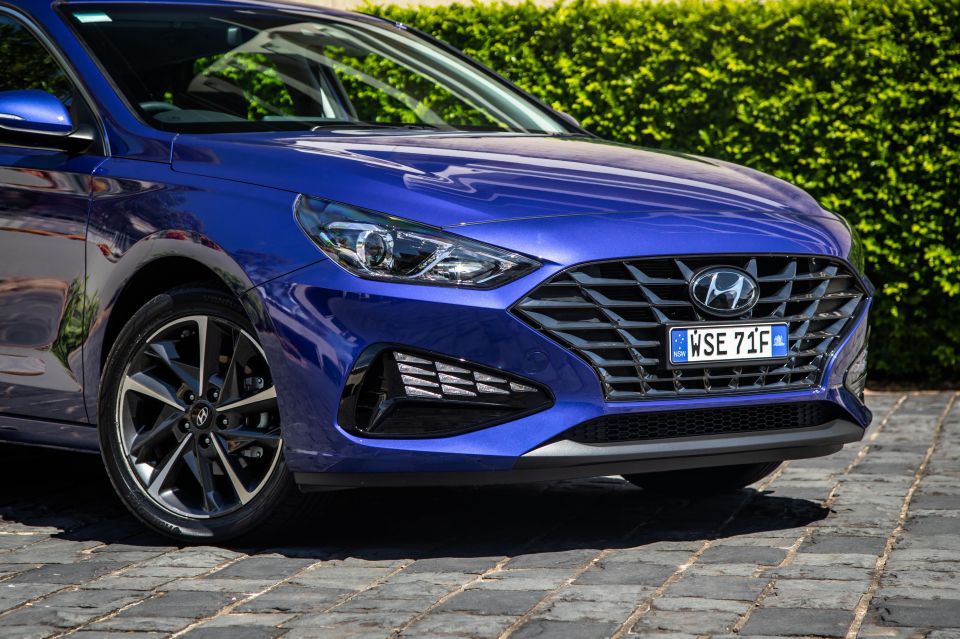
Buy your new car without the stress. It's fast, simple and completely free.

Great service from Travis and team, second time I have used this business would not hesitate to recommend them to anyone
Craig C.
Purchased a Ford Ranger in Sunshine Coast, QLD
CarExpert helped Craig save thousands on his Ford Ranger, now let us save you on your next new car.
Find a dealHyundai markets i30 as “the full package” and you’d expect our high-spec Elite version wants for little. Thing is, Elite used to be mid-grade, sat under the Premium version, though the fact the Premium nameplate is only now available in MY21 form as an N Line shows you where cashed-up buyer tastes are at.
Outside, the Elite fits 17-inch alloy wheels, auto projector beam headlights with high-beam assist, LED daytime-running lights and indicators, power-folding mirrors, rain-sensing wipers, one-touch power windows all round and rear parking sensors. You have to step up to N Line for 18s and LED headlights.
Inside, the cabin gets leather appointed seats, a 7.0-inch ‘Supervision’ digital screen in the part-analogue instrumentation, keyless go, Apple CarPlay and Android Auto compatibility and a full-sized spare wheel, all of which are shared with the lower-grade Active variant.
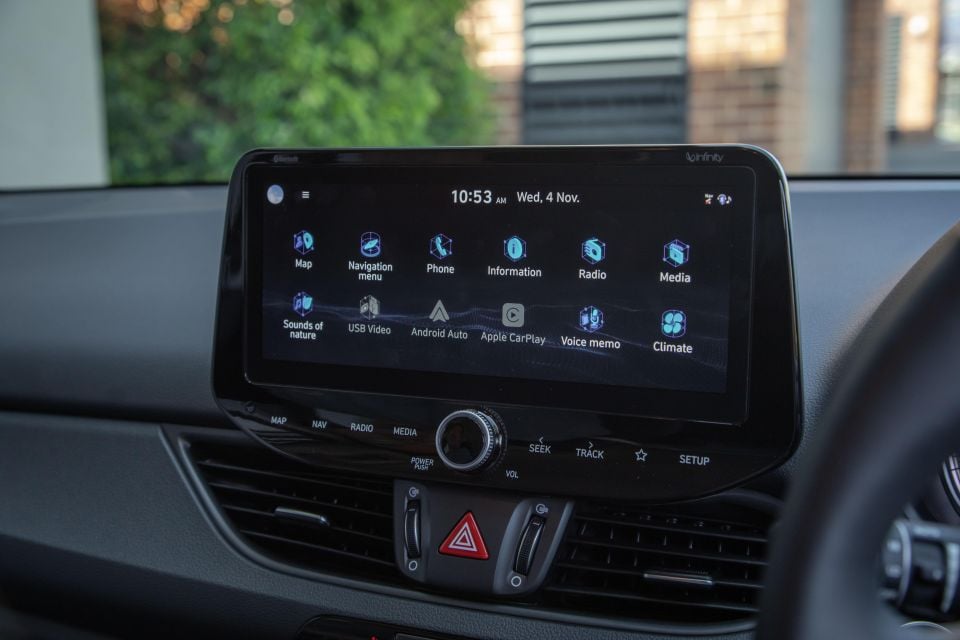
Elite exclusives include a larger 10.25-inch touchscreen, proprietary sat-nav, wireless phone charging, an upgraded seven-speaker Infinity-branded audio and dual-zone climate control.
There’s also a Rear View Monitor with Parking Guidance upgrade above the regular fit guided reversing camera and smart key remote.
It’s hardly a brimming fit out if one that’s all-round solid for Elite’s circa-$30,000 ask. For nicer spec such as electric seat adjustment, auto dimming mirror and seat heating/cooling, you’ll need to stump up for the ultimate N Line Premium version wanting considerably higher outlay.
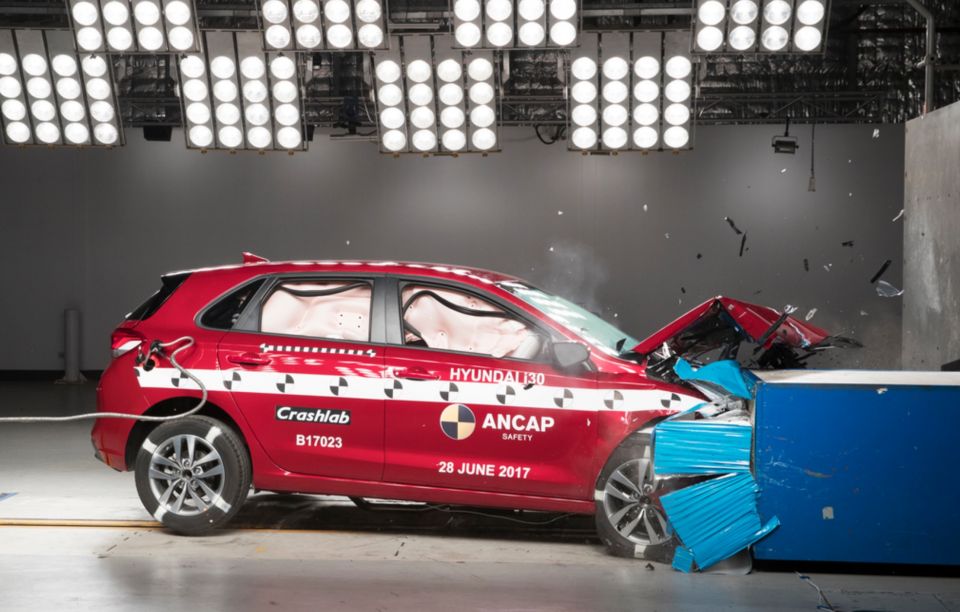
The updated i30 range carries over the five-star ANCAP safety rating as assessed in 2017 when this third-generation hatch range initially lobbed.
Officially its (Elantra-based) ratings are 14.01 out of 16 for frontal offset, 16 out of 16 for side impact, with whiplash and pedestrian protection rated as good and acceptable respectively. That said, the hatch version was audited for a separate frontal offset test returning a higher 14.80 score.
More recently the range has benefitted from a boost in standard-fit safety – particularly in the now-pricier base version – though the Elite is the fittest of the bunch.
It fits seven airbags – including driver’ knee – as well as the most fulsome Hyundai SmartSense suite of systems, bundling in autonomous emergency braking and forward collision warning with pedestrian and cyclist detection, lane-keeping assist, blind-spot monitoring, rear-cross traffic alert, safe exit warning, driver attention warning, and impact-sensing auto unlocking door mechanisms.
Driver assist niceties like lane centring and adaptive cruise with stop/go are also fitted to the Elite.
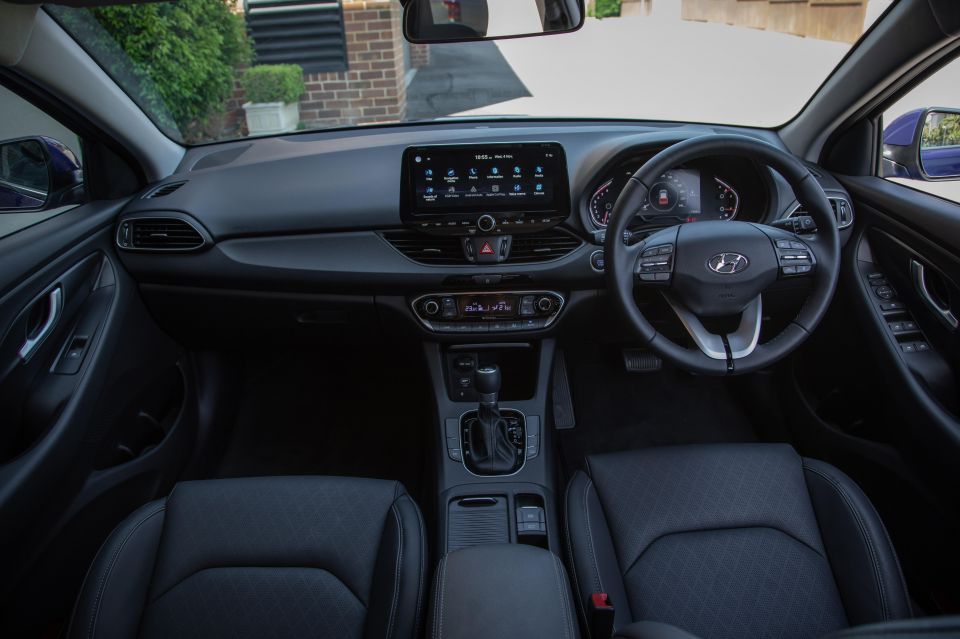
The first thing you notice climbing into the Elite is the large 10.25-inch infotainment screen perched conspicuously on the dash top.
You can’t miss it because almost everything else is drowned in an almost uniform shade of safe and dull grey. Previously you were able to option a beige interior but it no longer appears on the menu.
The large touchscreen and new colour LCD screen in semi-digital instrumentation do bring a classy effect, with slickly mature skins and graphic elements.
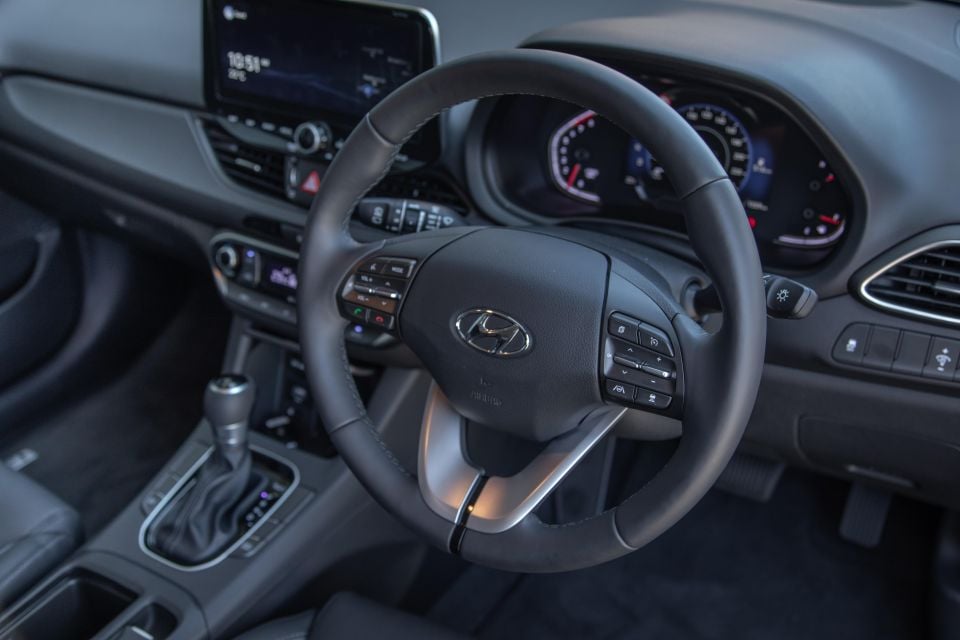
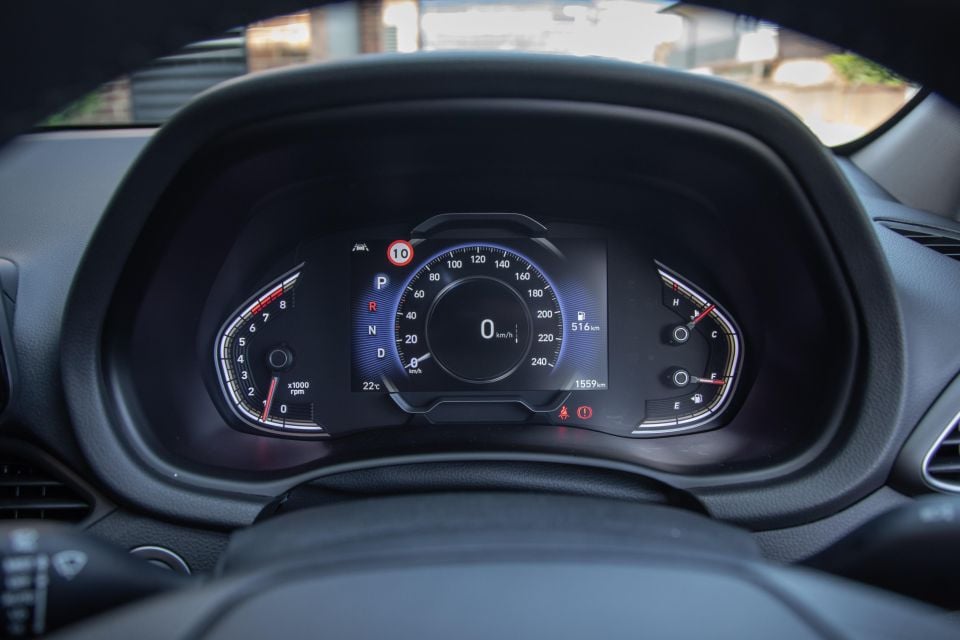
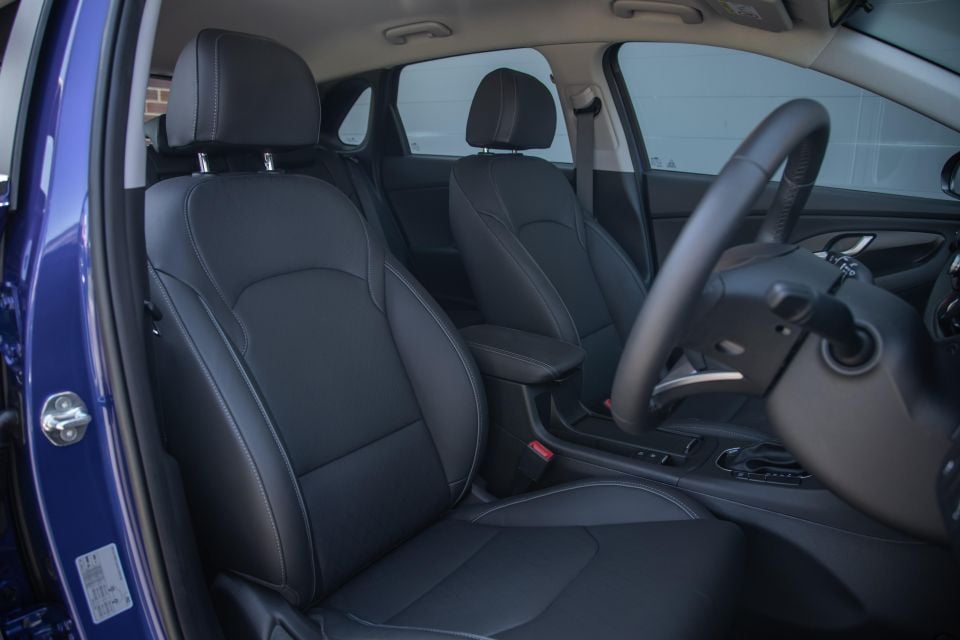
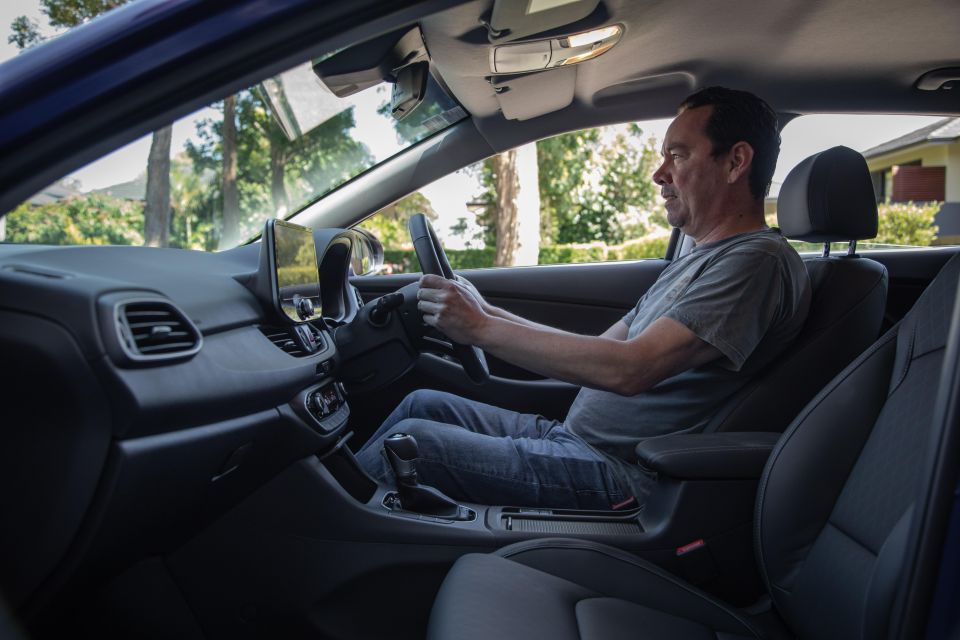
Add the neat blue-lit feature lighting throughout the cabin and there’s nothing unpleasantly tacky about it. There’s just not much variety in the interior design that brings much sense of lightness and joy.
You get a nice waxy-feel wheel, comfy low-slung front seating and decent perforated leather or leather-like trim – it’s hard to tell what is and isn’t the real stuff – and it seems nicely made save for some unsightly stretching of the seat material is some areas.
Initially, the upmarket infotainment system seems a mess of submenus once you start prodding around but ignore the myriad user options and it’s actually easy to use and to navigate.
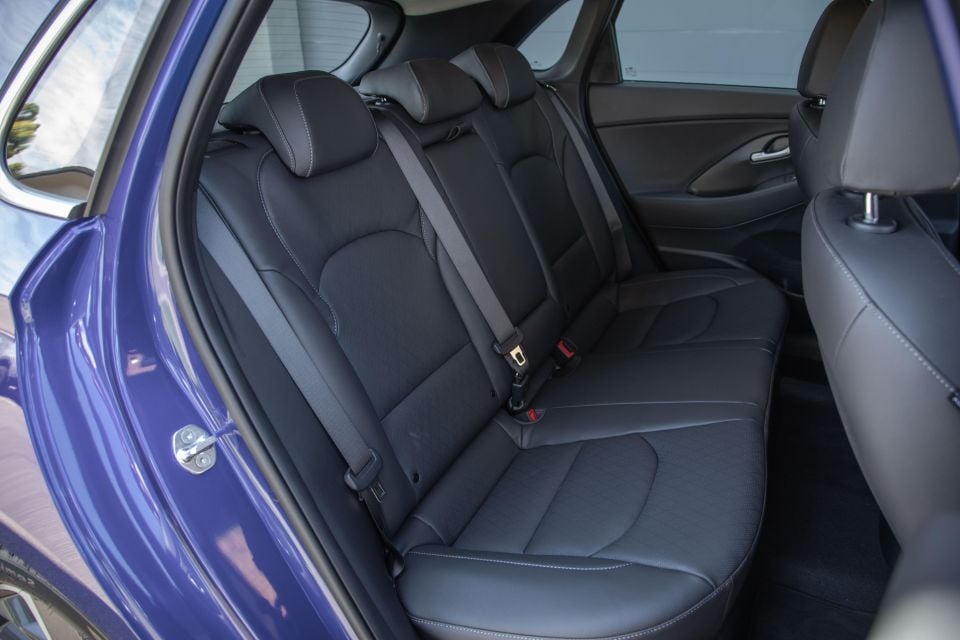

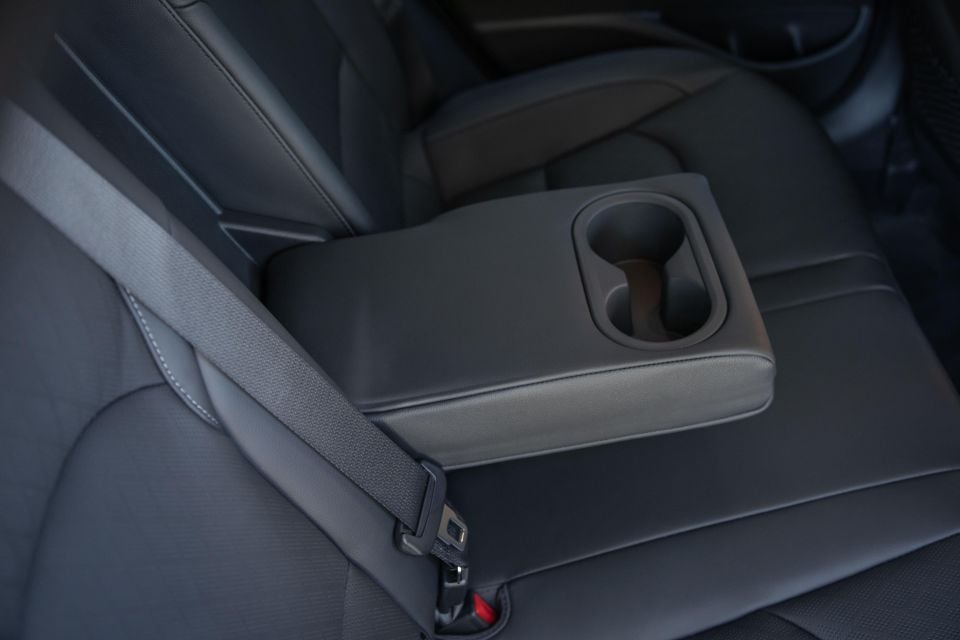
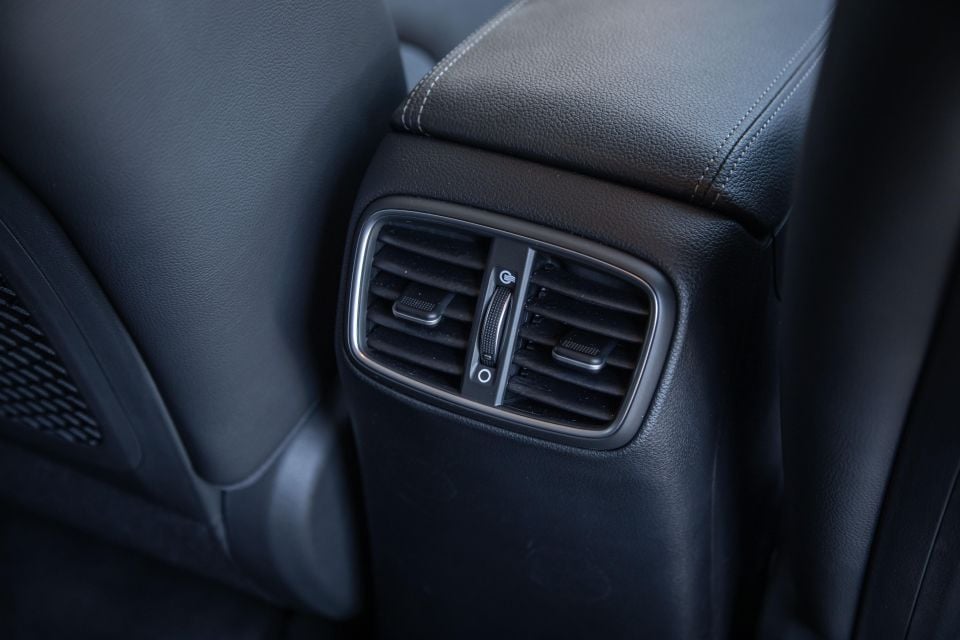
There’s a strange Sounds Of Nature feature that pipes a choice of ambience soundtracks through the speakers ranging from café white noise and footsteps in snow though to Rainy Day – sonically much like running toilet pipes – but I guess such ‘extras’ justify the unit’s higher-grade status.
The reversing camera, for its part, is so distorted through its viewing width that it’s tough to judge the proximity of objects located beyond the boot lid.
Space is a bit tight in row two, with constrictive legroom and only modest headroom. The newly released and roomier i30 Sedan is certainly worth consideration if you plan on regularly hauling around adults in the back.
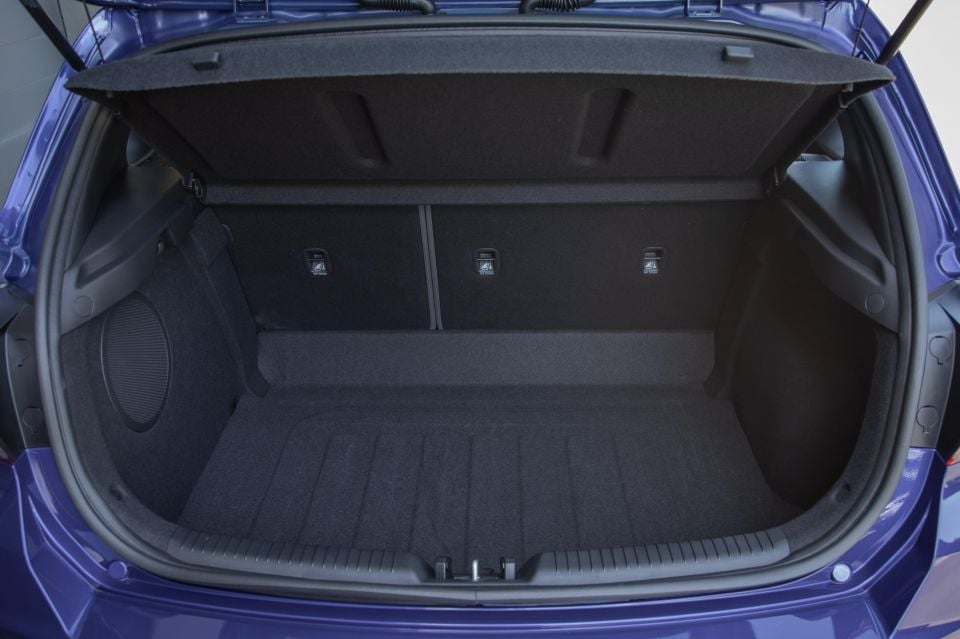

You do get rear air vents but no device power, though can feasibly plumb a cable into the console bin up front that features its own 12-volt outlet.
Despite the fitment of a full-sized spare the boot floor is very deep and despite the Elit’e extra boot-mounted subwoofer it measure the same 395 litres as the rest of the i30 Hatch range.
It does expand, of course, to a maximum of 1301 litres with the 40:60-split-fold rear seat backs stowed.
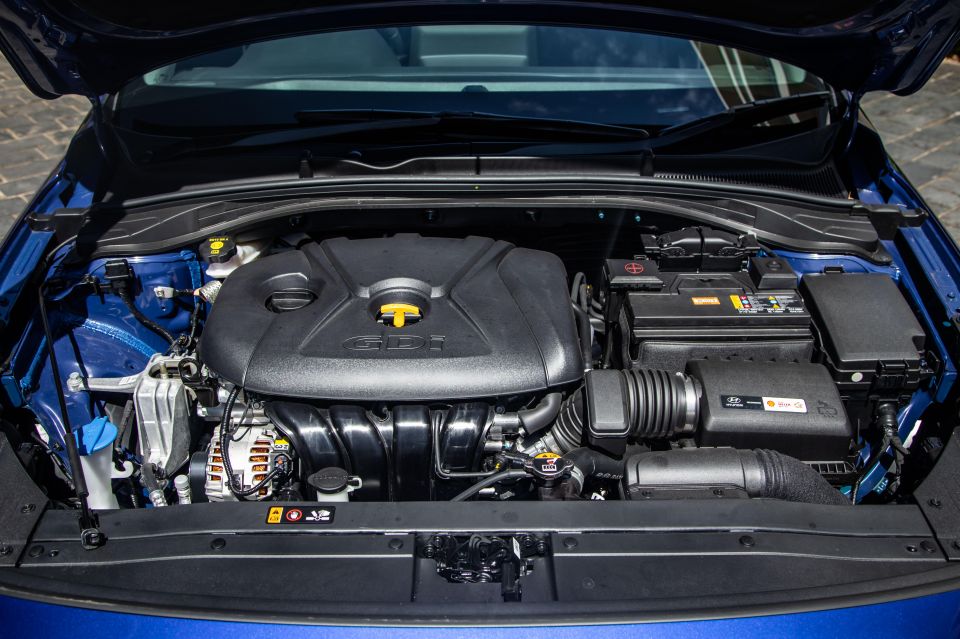
No diesel option any more and the Elite forges on with its carryover 2.0-litre naturally-aspirated petrol four offering an unchanged 120kW at 6200rpm and 203Nm at a quite high 4600rpm.
It’s backed by a conventional six-speed automatic offering a “sequential manual mode” though, without paddle-shifters and with its console selector arguably oriented backwards – upshifts are a forward push – it’s perhaps best considered strictly a self-shifter.
It would be remiss not to point out that the more desirable 1.6-litre turbocharged four – good for a superior 150kW and 265Nm in a vastly wider peak band – and seven-speed dual-clutch powertrain combination can be had in the N Line auto for a modest $1200 premium, and also in the fun-tastic six-speed manual N Line at a $800 saving over the Elite. Different pitch, different buyer, perhaps, but don’t say we didn’t mention it.
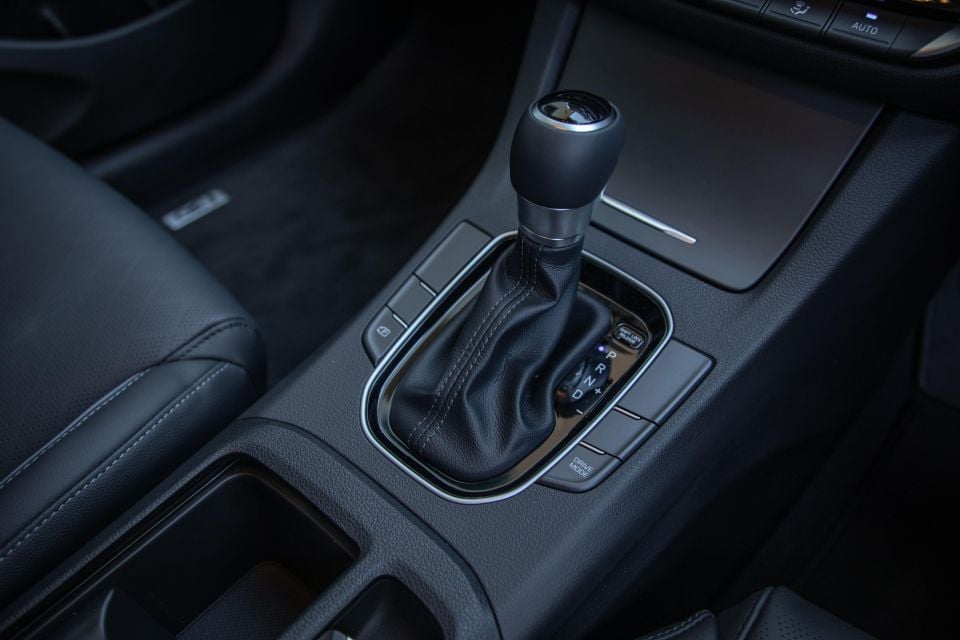
Either engine runs on a 91RON minimum and our Elite test subject is advertised as returning a combined consumption claim of 7.4L/100kms.
During our assessment our example showed around the mid eight-litre mark on its onboard computer, which is quite handy given driving was skewed towards urban running about (claimed to be a much thirstier 10.1L/100km figure). Pretty good, though the more powerful 1.6 turbo engine is said to be more economical still (at 7.1L combined).
Other specs mightn’t negatively impact the seat-of-the-pants experience but, technically speaking, the Elite doesn’t quite offer the prowess of its N Line twins.
For a start, our test variant runs torsion beam rear suspension rather than the sportier version’s more sophisticated multilink rear design; the braking hardware is smaller in front disc diameter (280mm plays 305mm); and the rolling stock is smaller (17s against 18s) that fit Hankooks rather than Michelin Pilot Sports.
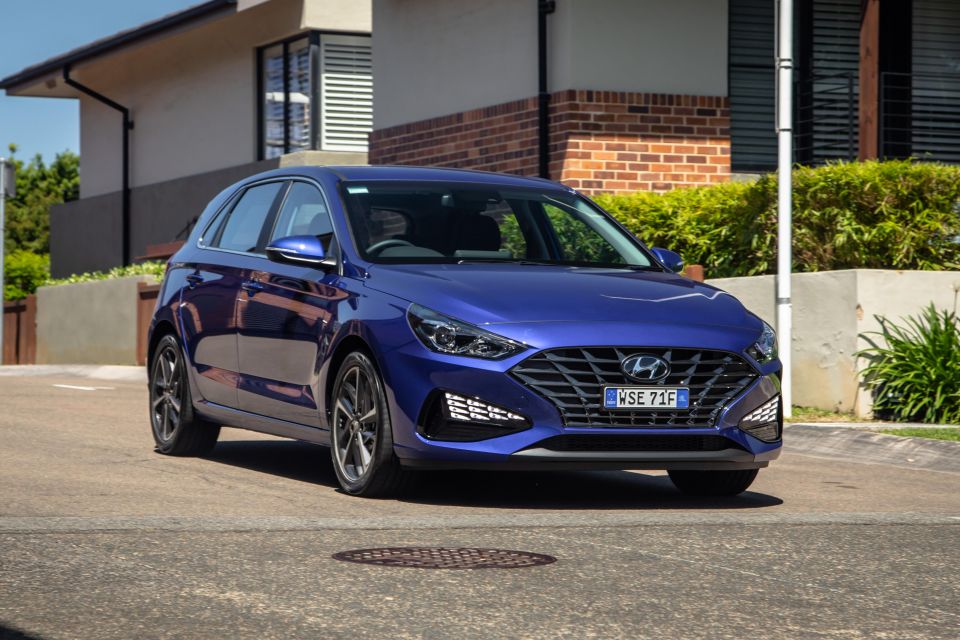
As far as easy-to-use and generally humdrum runabout motoring goes, the i30 Elite is a poster child.
It’s more vanilla than a Streets ice cream factory and pretty much thrill-free and there’s certainly nothing wrong with that – further, it’s precisely the right kind of character for certain types of buyers.
That’s not to say there isn’t light and shade in the on-road experience. The i30 Elite is certainly more resolved with certain areas than it is with others.
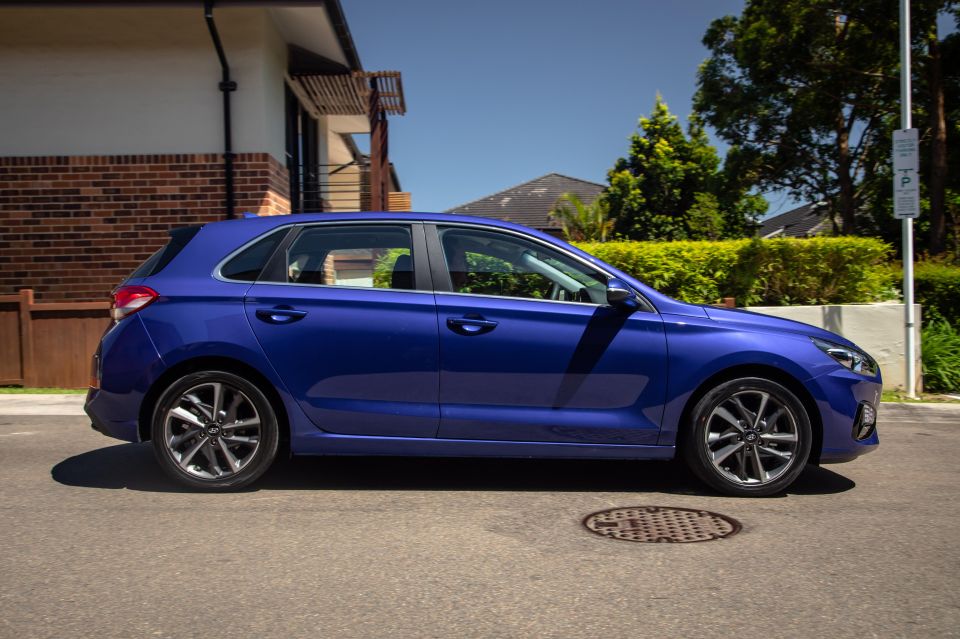
I was expecting disappointment from the powertrain but it’s not the case. Sure, you need to dig into the engine’s rpm band for a wake-up call, but the modest torque is balanced out nicely with a clean and very linear delivery that’s impressively friendly around town, provided you don’t ask for any sudden lunges of acceleration.
The six-speed auto, too, is well behaved and there wasn’t much call during our test to dive for the drive mode to activate Sport mode in compensation for drivability shortcomings.
The powertrain seems well integrated into the package and somewhat bombproof, too. There’s a good reason why good old natural aspiration is popular with rental car companies.
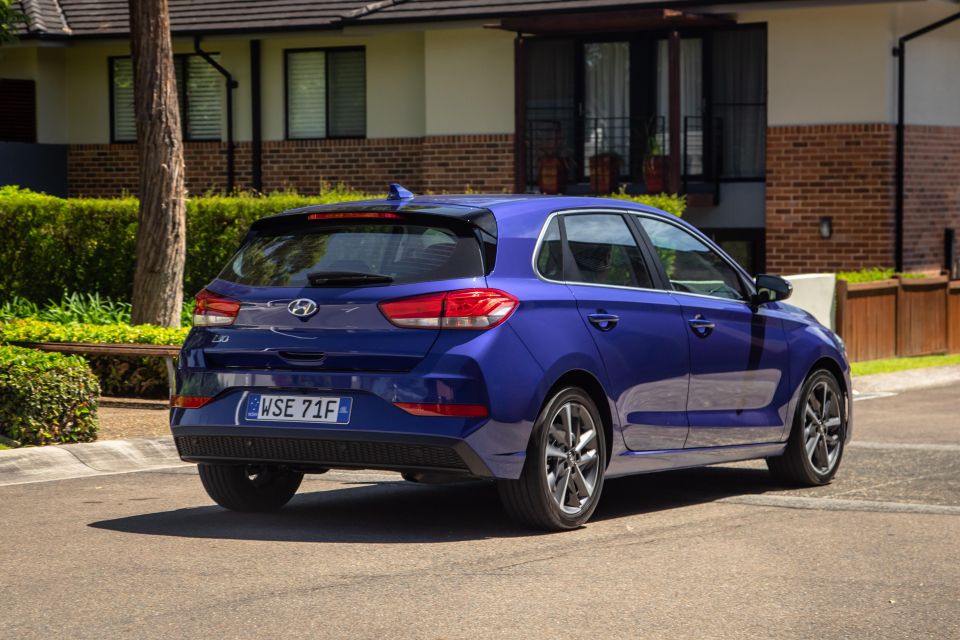
Where expert car reviews meet expert car buying – CarExpert gives you trusted advice, personalised service and real savings on your next new car.
The ride and handling package isn’t quite so impressive, if more for the former than the latter.
The quality of the steering is right up there and has long been a hallmark of the i30 experience though it is touch heavy with its slight under-assistance. And it’s quite a lithe, engaging and responsive chassis, to the point where grocery getting and school runs can be quite enjoyable.
Letting the team down a bit is noise. Tyre noise, suspension nose, ambience noise: for its upmarket positioning the Elite variant is just too boisterous to feel genuinely nice, or perhaps as nice and as polite as it should be.
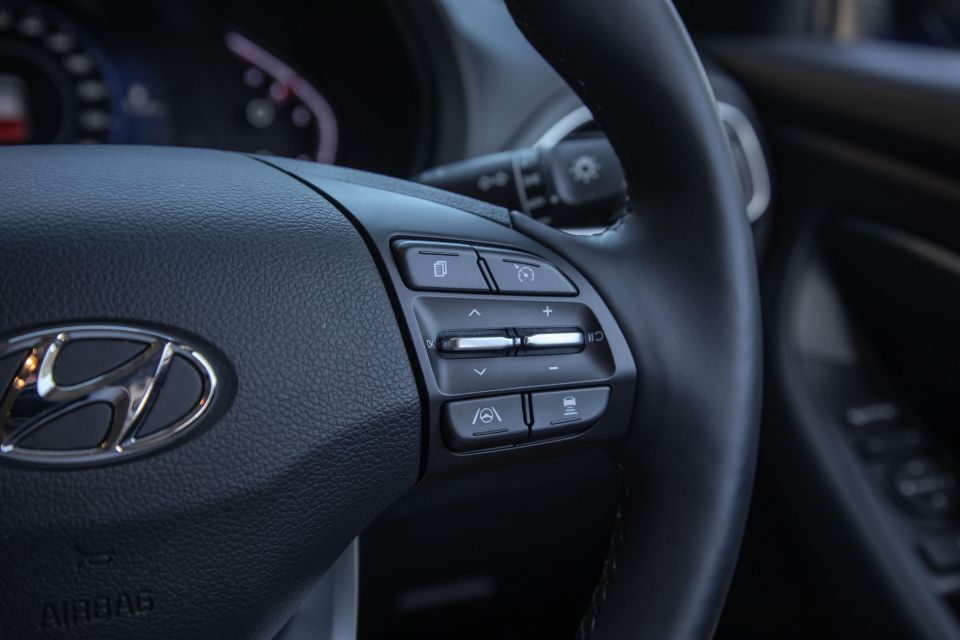
The ride itself is actually fairly decent if a little firmer than it really should be. Given precious little else in the package promises a sporting edge there’s really no need for its slightly too-taut manner.
Actual damping is nicely measured, it just makes enough of a ruckus over speed bumps and lumpy surfaces that it just seems less composed that it is.
When it comes to quiet comfort and low fatigue, which really is Elite’s main game, it’s neither terrible nor all that impressive, in what is in an overall sense a fairly unremarkable experience.

Hyundai covers its line-up with a five-year, unlimited-kilometre warranty.
The naturally-aspirated i30 hatches require servicing every 12 months or 15,000kms, whichever comes first.
Hyundai’s capped price servicing program covers the extend of the warranty period, which is five years (and unlimited kilometres of running), with pre-paid plans available for three years/45,000kms ($783), four years/60,000kms ($1143) and five years/75,000kms ($1404).
On average, that’s between $261 and $285 per year.
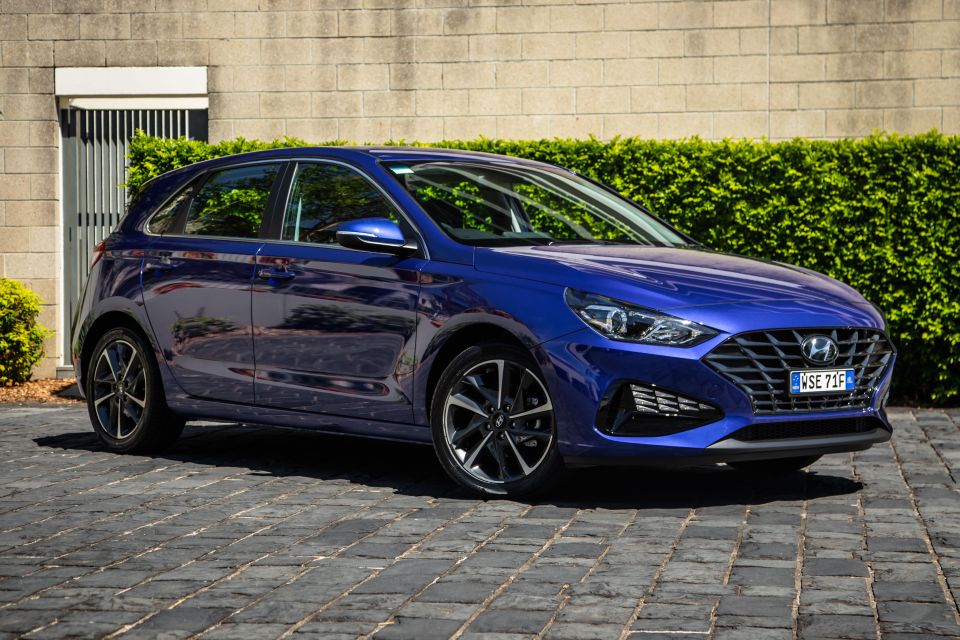
Ostensibly, the Elite adds a revised look and a bit more in-cabin visual jewellery for a modest increase in price over the old version.
It’s a decent if mostly workmanlike offering if you like the cut of the i30 jib and care less about sporting pretensions, it’s specified and priced similarly to its key competitors and there’s certainly a place in the motoring universe for it to comfortably sit.
But there’s a reason why the old SR-cum-N Line, that remains just a modest fiscal hike up the range, has garnered such a warm reception to many who’ve owned them. Sporty or not, the 1.6 turbo/DCT combination and the sweetly struck driving manner of its deftly tuned multilink underpinning make for a more impressive and remarkable package.
Alternatively, if you’re not wedded to the Elite’s big-screen eye candy, the leather-appointed Active a few grand further down the range makes an arguably more compelling value pitch if you’re a after a decent runabout on what’s a more seductive price point.
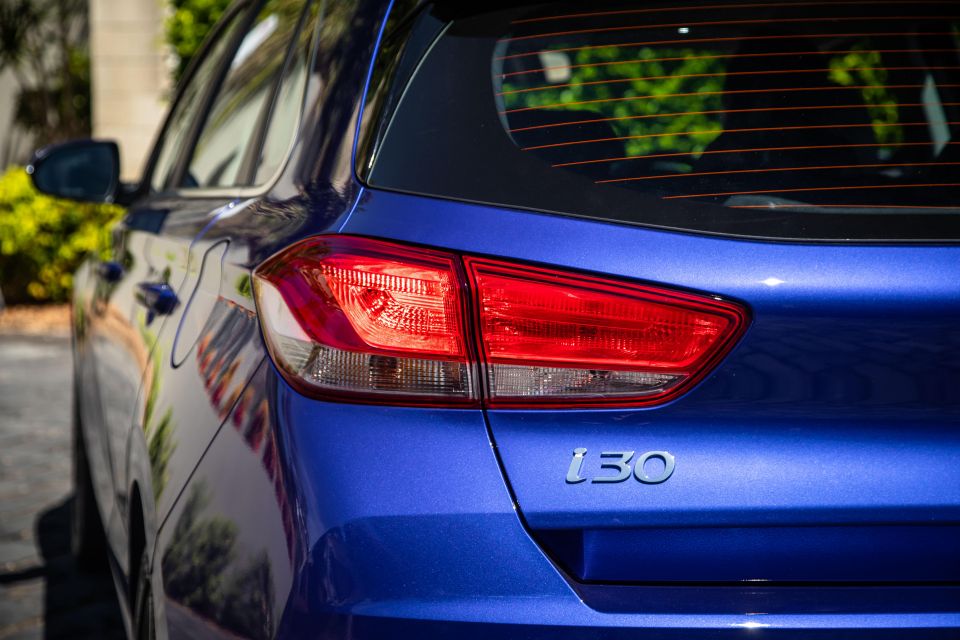
Click the images for the full gallery
MORE: Hyundai i30 news and reviews MORE: Everything Hyundai
Where expert car reviews meet expert car buying – CarExpert gives you trusted advice, personalised service and real savings on your next new car.


William Stopford
4 Hours Ago


CarExpert.com.au
3 Days Ago


Max Davies
4 Days Ago


Damion Smy
5 Days Ago


Max Davies
5 Days Ago


Max Davies
7 Days Ago